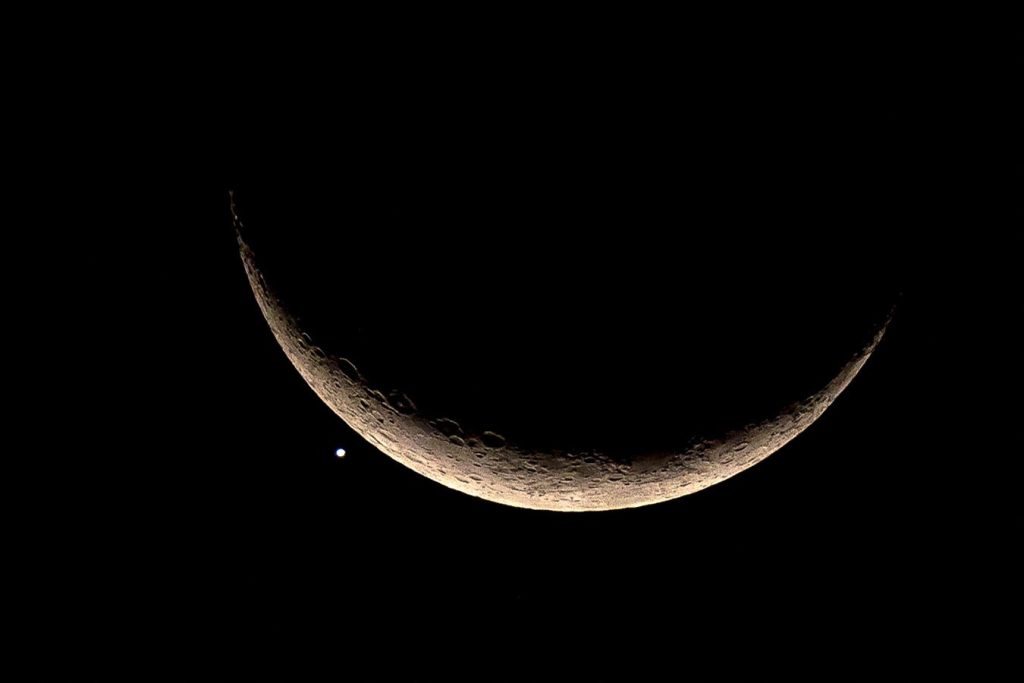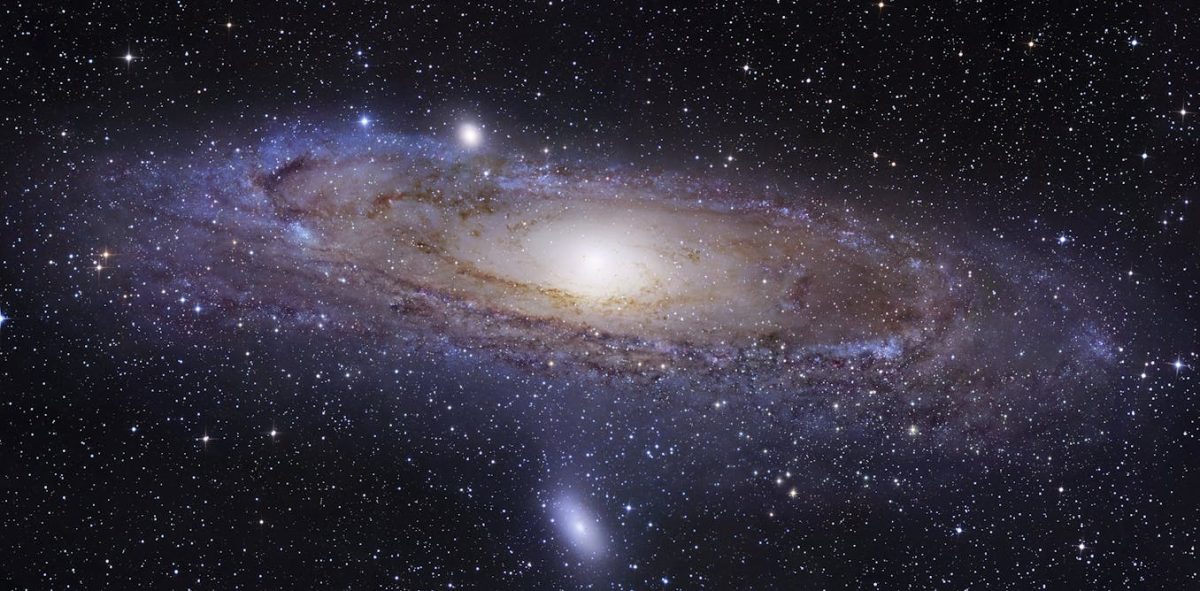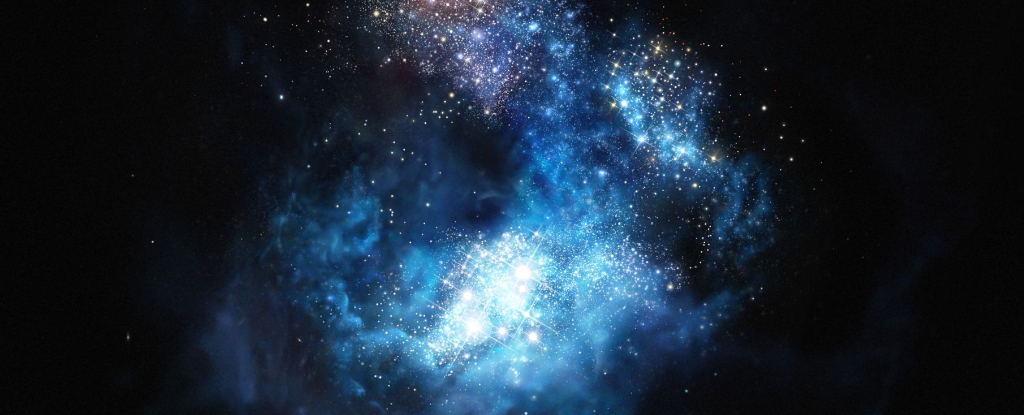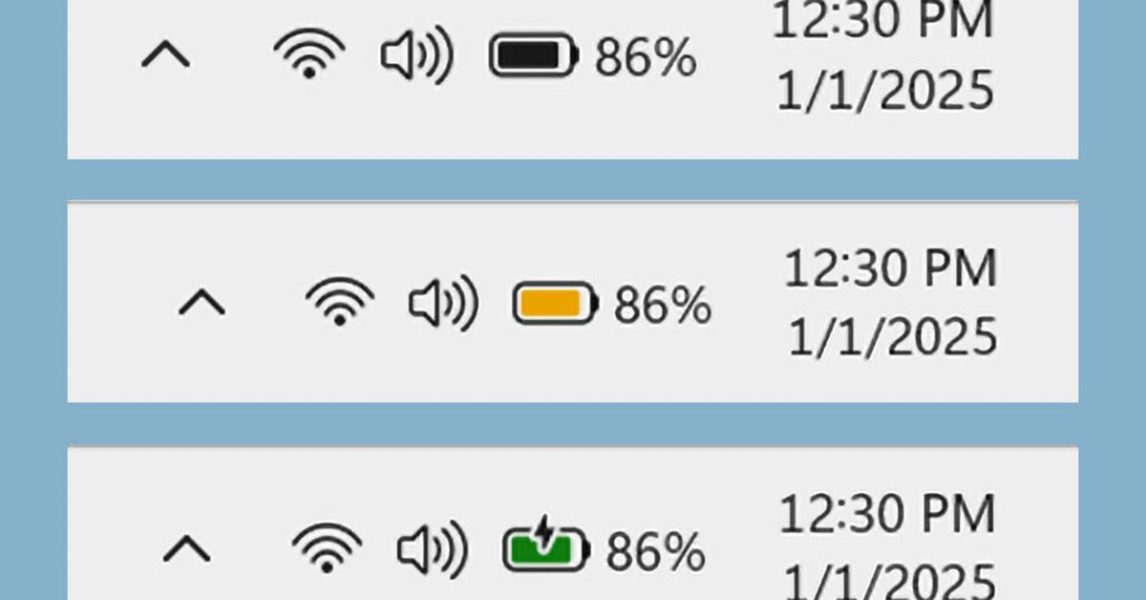New Moons In 2025: The Darkest Nights For Stargazing This Year – Forbes

In the celestial dance, there are many wonders: aurora dancing through the atmosphere, meteors streaking across the sky, eclipses that realign your understanding of the cosmic scale, and of course, the quiet contemplation of a night under the band of the Milky Way.You know what “ruins” all of them? A big, bright full moon.Don’t get me wrong: I love observing the moon: its contours and craters are fascinating to explore with a good pair of binoculars or a telescope, and the terminator line throws everything into sharply fascinating relief.The crescent moon and Venus are pictured in Bangkok on March 24, 2023, following a lunar occultation … [+] of the second planet from the sun. (Photo by Jack TAYLOR / AFP) (Photo by JACK TAYLOR/AFP via Getty Images)But if you’re trying to see stars, planets, or some other astronomical phenomena, the moon can provide a real obstacle. On the night of the full moon, its illumination can obscure as much as a quarter of the sky making it harder to see objects in that part of the dark dome overhead. Generally speaking the nights of and near the new moon – when the moon is not illuminated – are better for most stargazing experiences.To help you plan your astronomy adventures this year, it helps to know when the new moon is occurring. Below you’ll find the 12 new moons in 2025, plus some interesting astronomical events that are happening near those dates. The only other issue you might then face are clouds, but hopefully there will be clear skies too!A lunar occultation of Saturn (Photo by Jamie Cooper/SSPL/Getty Images)The new moons in 2025 are generally toward the end of each month, shifting toward mid-month as the year progresses (due to the 29.5 day lunar cycle). January’s late new moon will occur on the 29th.Within a few days of January’s new moon, there are a few interesting stargazing opportunities:February’s new moon on the 27th/28th (depending on your time zone) occurs in close conjunction to one of the best astronomical events of the year, in my opinion: for those in Australia, Papua New Guinea, eastern Indonesia, and Solomon Islands, and the surrounding region, you’ll have a chance to see the lunar occultation of Mercury on March 1st.Lunar occultations of Mercury are among the rarer occultations we can see, so it’s a great reason to head out after the sun sinks below the horizon to try and spot the event. For the rest of us, the moon and Mercury will have a ‘close approach,’ appearing a mere 20.5 arcminutes apart. For context, during the Great Conjunction of Jupiter and Saturn in 2020, those planets appeared just 6 arcminutes apart at their closest.A bird rests on dome as the moon partially obscures the sun during a partial solar eclipse visible … [+] from Lahore on October 25, 2022. (Photo by Arif ALI / AFP) (Photo by ARIF ALI/AFP via Getty Images)The new moon in March will take place at on the 29th; this is actually a delightfully busy time of year from an astronomy perspective. A few days earlier (on the 23rd), Saturn will cross its ring plane (meaning the rings can be barely viewed, edge-on), which is in itself worth heading out to try and spot with a telescope or binoculars.A partial solar eclipse will also occur on the 29th; viewers in eastern North America, western and northern Europe, northwestern Africa, and northern Russia will see a partial eclipse where as much as 92% of the sun will be blocked by the moon.Lastly, this weekend of the March new moon (and the preceding weekend) are the two best weekends of the year to try and ‘run’ the Messier Marathon – an annual event where astronomers attempt to observe all 110 Messier objects in a single night. The better weekend is that of the 22nd, but the 29th is a good back-up if you don’t have clear skies for the first attempt.The April new moon on the 27th moves through a busy part of the sky: it has a series of close visual approaches with different planets in the solar system in the surrounding days: with Saturn and Venus on the days preceding and Jupiter on the 30th. Any of these nights are a great chance to head out and spot the sliver of crescent moon with bright planets nearby – it’s a compelling scene for young stargazers if your kids or grandkids are interested in the subject too.The galactic core area of the Milky Way over Maskinonge Pond in Waterton Lakes National Park, … [+] Alberta. (Photo by: Alan Dyer/VW PICS/Universal Images Group via Getty Images)May is, broadly speaking, a ‘slow’ month, astronomically speaking: there are no major meteor showers, lunar occultations, or other rare events currently forecast. It is, however, the start of Milky Way season in the northern hemisphere, when the distinctive core of Milky Way is more easily seen above the horizon after sunset. If you’re keen to spot that, the nights surrounding May’s new moon on the 26th/27th (depending on your time zone).The Lagoon Nebula in Sagittarius (Photo by H. Armstrong Roberts/ClassicStock/Getty Images)The new moon in June will take place on the 25th, during another time of year with fewer bombastic astronomical sights; add on the fact that it’s near the June solstice when the nights are shortest in the northern hemisphere, and you might be tempted to stay in after dark on this date.Don’t let that deter you though: if you’re viewing from a place with limited light pollution, it’s the warmest season, the Milky Way will be evident, you’ll be able to easily observe Ptolemy’s Cluster (Messier 7, an open star cluster) and the Lagoon Nebula (Messier 8) high in the sky with a telescope, and you might even spot June Boötids meteors as that minor shower peaks around June 27th each year. Those are plenty of great reasons to head out stargazing if the skies are clear!As the new moon approaches in late July, it’s a great time to pull out your telescope – if you have one –; everyone’s favorite dwarf planet, Pluto, will reach opposition (and be at its brightest for observation) on the day after the new moon (the 25th).There are also a few minor and/or southern hemisphere meteor showers at this time of year (the Piscis Austrinid, Southern δ-Aquariid, α-Capricornid meteor showers), so keep your eyes peeled for shooting stars as you’re trying to train in on distant, tiny Pluto.View of meteorite streaking over Trona Pinnacles near Death Valley, CA during annual Perseid Meteor … [+] Showers, August 2, 2019. (Photo by Bob Riha Jr.,Getty Images)Unfortunately, the August new moon on the 23rd doesn’t overlap with the Perseids meteor shower a few weeks earlier (the 12th this year) – it’s always a great year when it’s deeply dark for one of the most active meteor showers of the year. Instead, the full moon will plague those out trying to spot Perseids (if you want a great example of how bright the moon can be in the night sky, try to be out on the peak night of the Perseids this year!)Nevertheless, you might still spot a few Perseid stragglers or even κ-Cygnid meteors (which peaks on the 18th).The new moon in September 2025 (on the 21st) occurs as part of another partial solar eclipse, this one visible for those in far eastern Australia, New Zealand, other south Pacific island nations, and a lucky few at Antarctica’s McMurdo Station. The moon will block no more than 79% of the sun’s disk during this short eclipse.On surrounding nights, you might also spot the lunar occultation (moon passing in front) of Venus – visible in northeastern Canada, Greenland, Europe, and northern Africa – or try to observe both Saturn and Neptune which will be at opposition and brightly visible (with a telescope, if you’re trying to view the latter).October is one of the most active months for meteor showers, and the new moon on the 21st falls right in the busy season: the ε-Geminids peak on the 18th, the Orionids peak on the 20th, and the Leonis Minorids peak on the 24th. This is a great night to throw on an extra layer and head out to make a wish or two.Similarly, the new moon in November occurs in the window for several meteor showers: the Northern Taurids that peak on the 12th, the Leonids that peak on the 16th, the α-Monocerotid meteor shower that peaks on the 21st, and the November Orionids that peak on the 28th. Any time during this window, the moon will present relatively little obstacle to spotting any meteors that might burn bright entering our atmosphere.The Geminid meteor shower is being seen at the top of Niubei Mountain in Ya’an, Sichuan Province, … [+] China, on December 14, 2023. (Photo by Costfoto/NurPhoto via Getty Images)As mentioned, the new moon phase is progressing earlier in each calendar month, which works out in favor of the Geminids meteor shower this year (and definitely not in favor of viewing the Perseids in August). While the Geminids peak on December 13th, the moon will be relatively less intrusive as it approaches its new moon phase on the 19th.This month’s new moon might also present a unique comet-viewing opportunity: Comet 240P/NEAT will pass perihelion (its closest approach to the sun) and may put on a show during this last few weeks of the year. Astronomers are already keeping an eye on this short period Jupiter-family comet with interest in case it becomes particularly good for observing.Hopefully, this helps you set your calendar for dates when you’ll try and get out to enjoy the night sky this year. Wishing you clear skies!One Community. Many Voices. Create a free account to share your thoughts. Our community is about connecting people through open and thoughtful conversations. We want our readers to share their views and exchange ideas and facts in a safe space.In order to do so, please follow the posting rules in our site’s Terms of Service. We’ve summarized some of those key rules below. Simply put, keep it civil.Your post will be rejected if we notice that it seems to contain:User accounts will be blocked if we notice or believe that users are engaged in:So, how can you be a power user?Thanks for reading our community guidelines. Please read the full list of posting rules found in our site’s Terms of Service.





